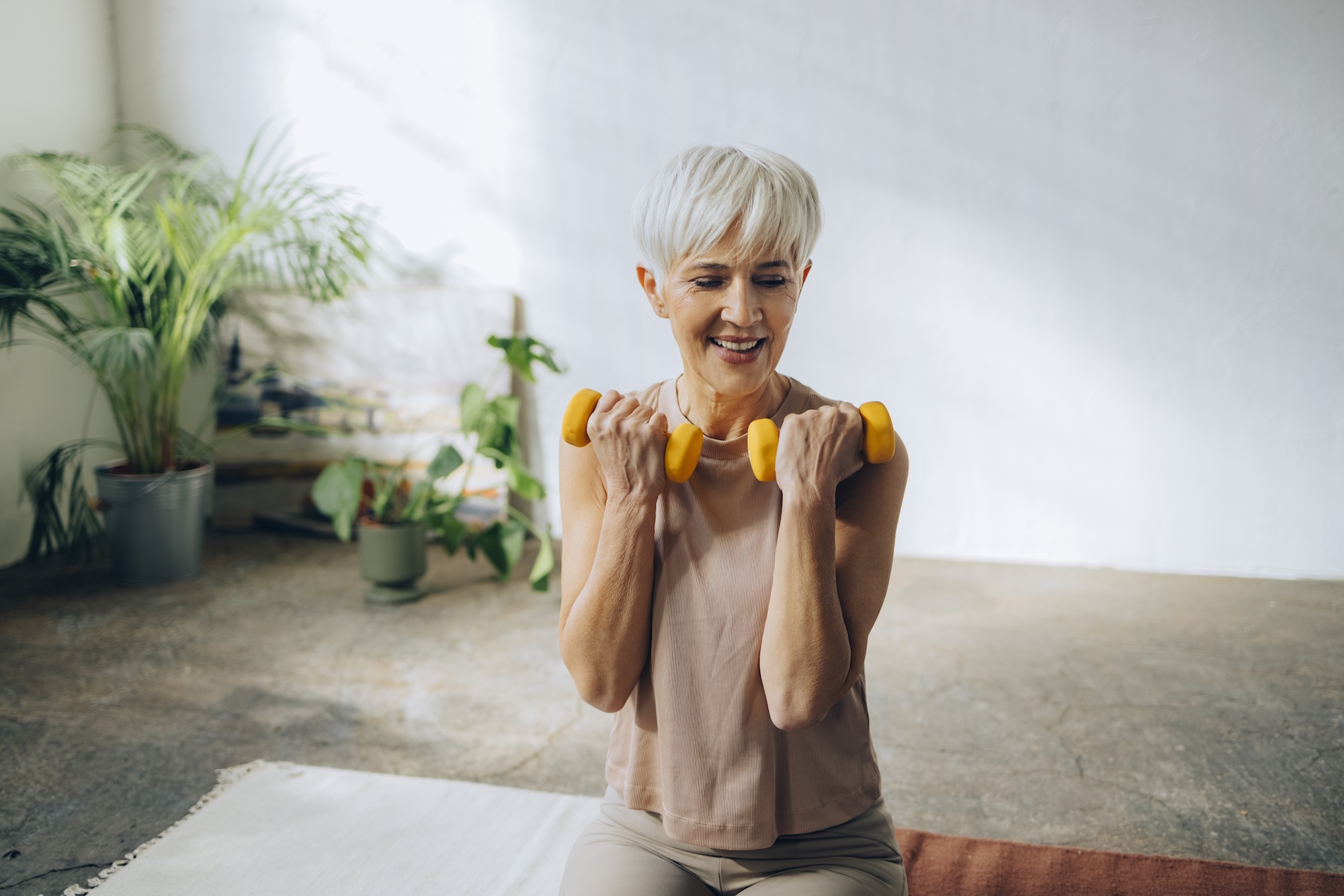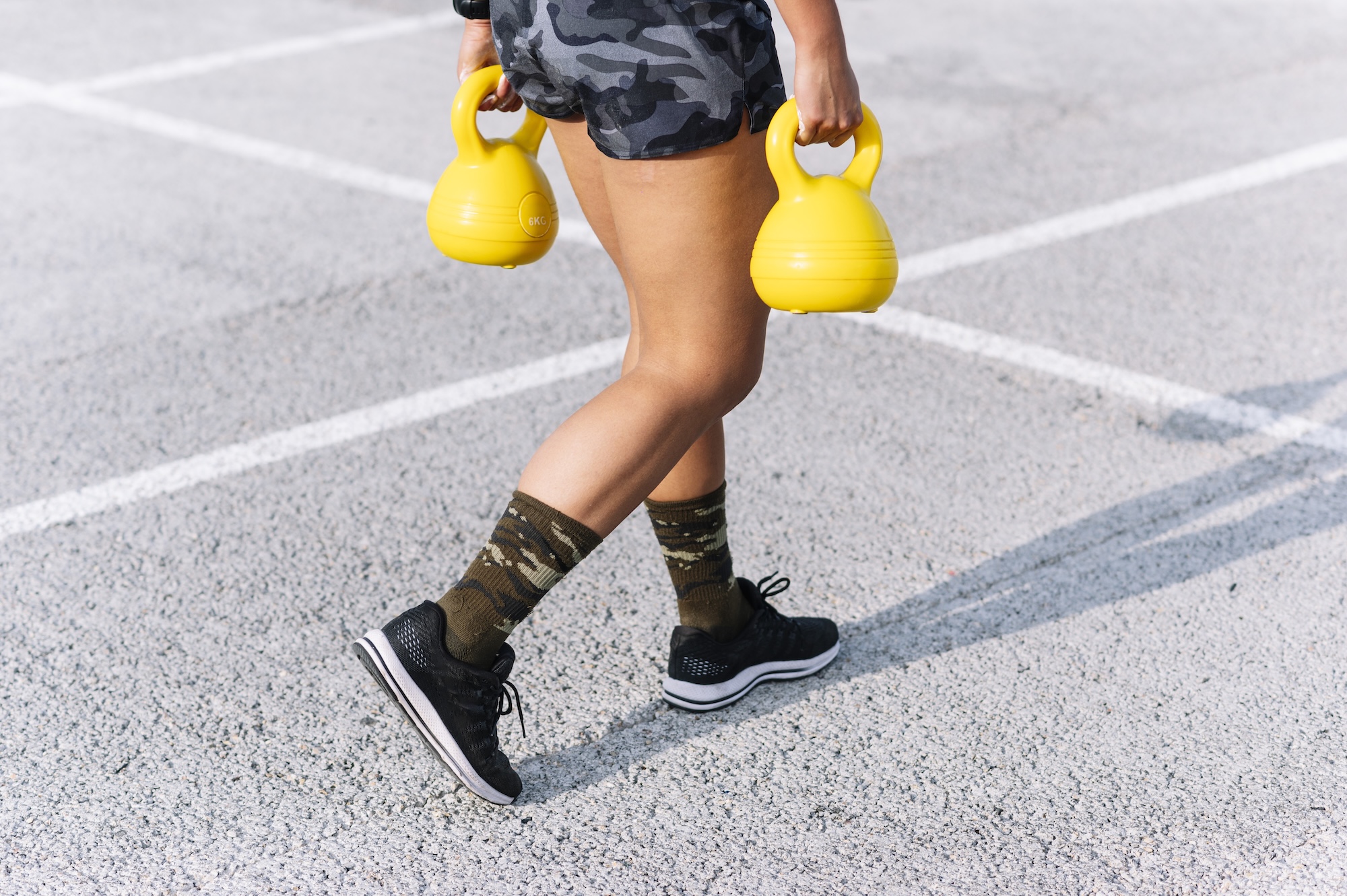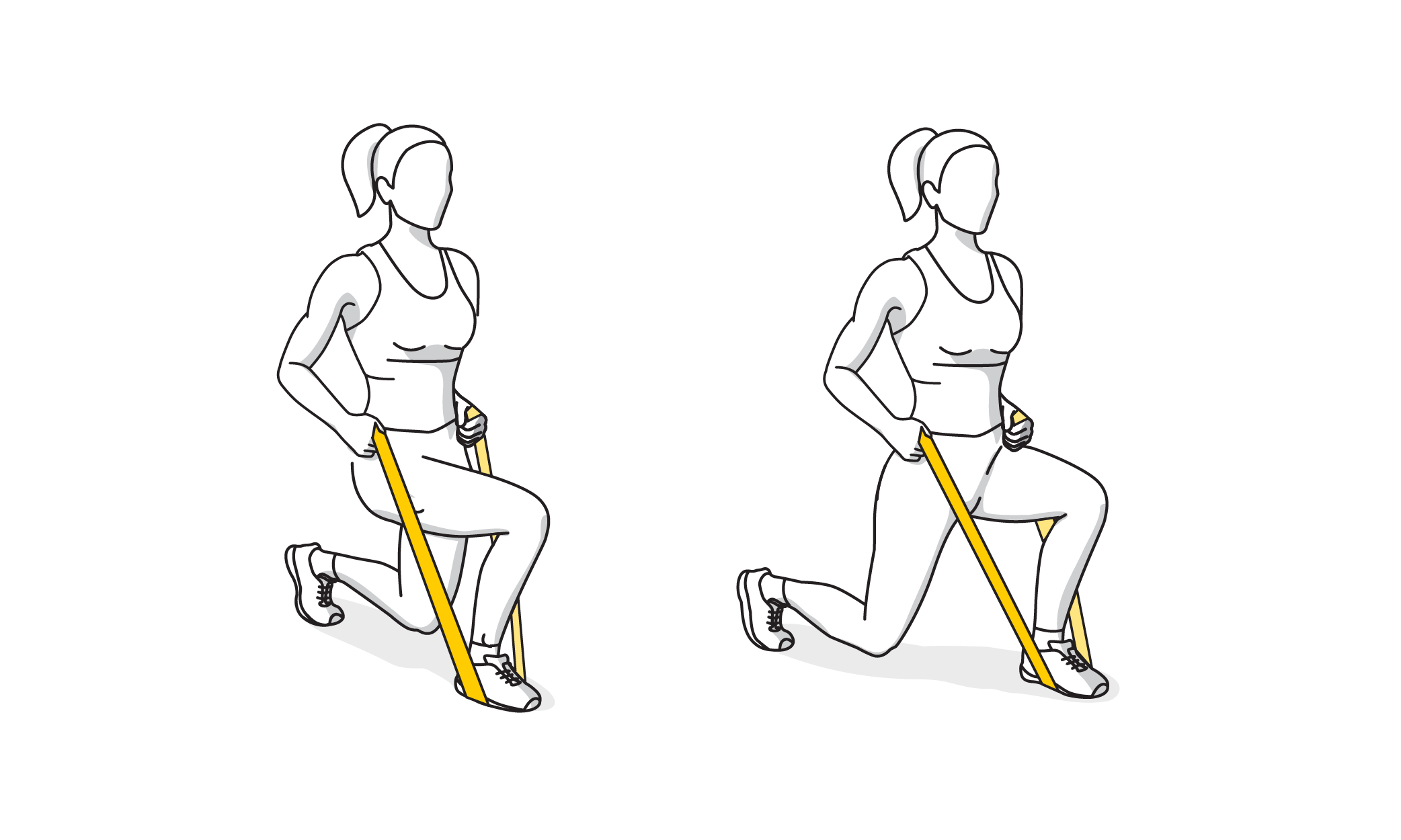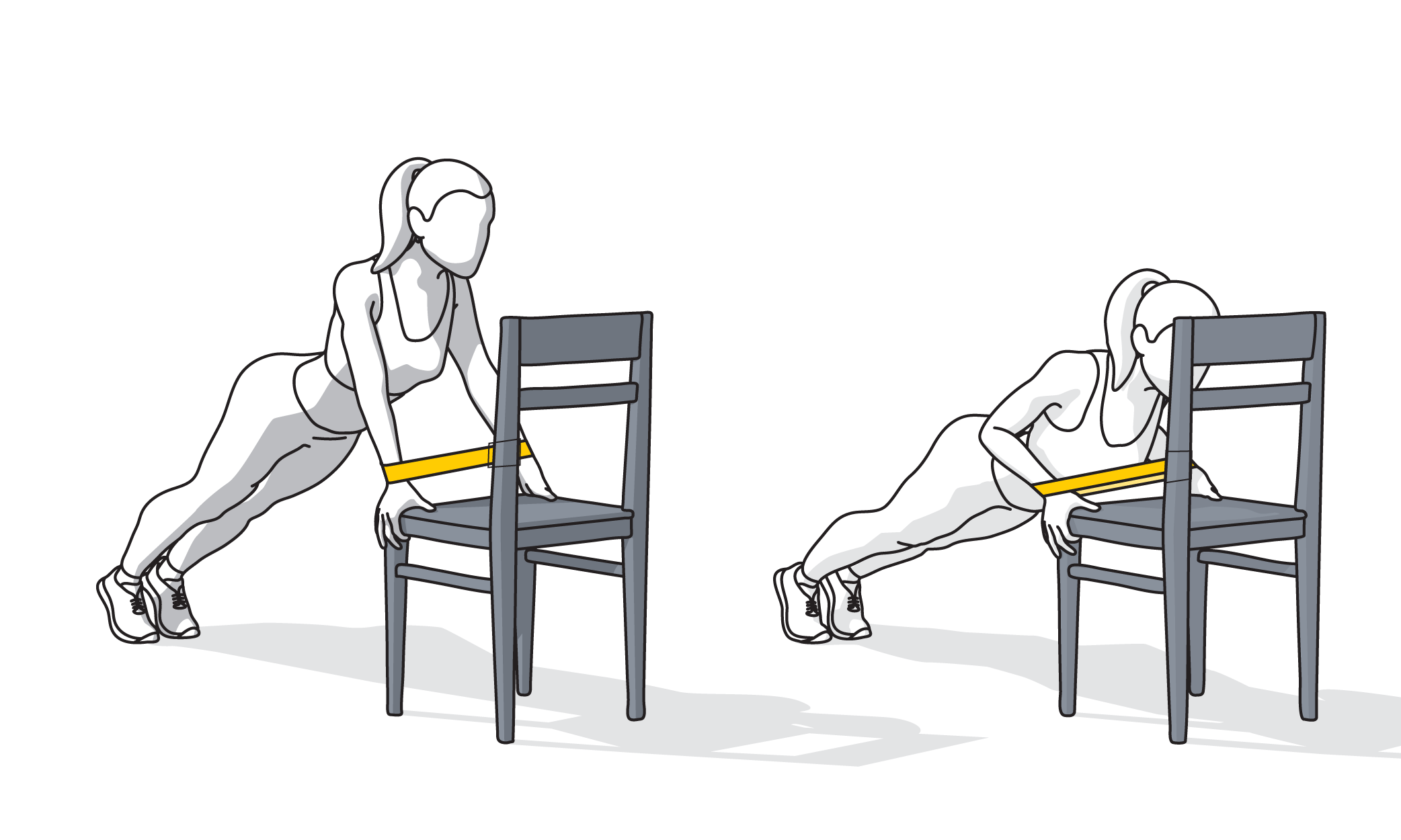- Home
- Mind & body
- How to build a home gym for less than $100
At CBHS we help you manage your health challenges. We believe in offering you the services, support and tools you need to live your best life.
Health and Wellness Programs are available to support eligible members towards a healthier lifestyle. Each Health and Wellness Program is subject to its own eligibility criteria.
Contact us for more information and to confirm your eligibility for a program.
How to build a home gym for less than $100

No gym membership? No worries. It doesn’t have to stop you from exercising. It’s important to stay fit and healthy – both physically and mentally – and you can do that in the comfort of your own home.
CBHS Wellness Consultant Jasmine lives on the mid-north coast of New South Wales and she normally works in Sydney. She used to find it hard to get to the gym after a long commute, until the day she decided to bring the ‘gym’ home.
‘I bought an exercise mat, a resistance band and some free weights and I downloaded an exercise app. All up, it cost me less than $100. Now I schedule a workout each night in a corner of my living room, and I have a lovely view through the window. It’s cheaper than going to the gym and a lot nicer too!’
A strong body has big health benefits
We know that regular exercise has multiple benefits for both your physical and mental health.
You might have less space at home than you would in a gym, so it makes sense to focus on building strength and power.
Strength training may not burn as many calories as cardiovascular training in the short term, but the good thing about strength exercises is that they help retain strong muscle mass. Muscle needs energy so you burn more when at rest. That means you burn more calories (energy) when you’re simply sitting at your desk, or even when you’re asleep!
Benefits of strength training
- Stronger bones can reduce the risk of osteoporosis
- Improved posture brings better balance
- Stronger muscles can support your joints and ease pain
- Strength training can reduce your risk of getting type two diabetes
- The endorphins and serotonin released during exercise can reduce stress levels
- Increased muscle mass helps with weight management
- Exercise can improve your sleep and help you think more clearly.
How to create a home gym

Allocate a space to workout
This could be a dedicated room or just a corner of your living room. A designated space reduces set-up time and will be a visual reminder to exercise. Shift furniture if necessary, make sure the space is free from uneven surfaces and give yourself plenty of room to move around.
Choose your equipment


Free weights (left) and kettlebells (right) are popular options for home fitness.
The basics to build a home gym can cost less than $100. Of course, you can spend more if you want to, or less. Here is a list of some of the basic items you can purchase for your home gym:
Equipment | Price |
$9 | |
$29 | |
$32 | |
$20 | |
$2 |
*A non-slip exercise mat is important, especially if you’re lifting weights.
If budget’s a problem, there are some ‘free’ alternatives you can find at home:
- Use canned goods, bags of rice or bottles full of water in place of weights
- Step up and down on the bottom step of a flight of stairs
- Do push-ups against a wall or benchtop.
Exercise with no equipment
Check out our article on the three top exercises you can do at home without any equipment.
Create a plan and set a time
Decide what type of exercise you want to do. Resistance training? Free weights? Do you want to create a routine yourself or follow a class online?
If you were attending a class at the gym, you’d have to turn up on time. So, schedule a time to use your home gym, set a reminder on your phone and don’t be late! Treat this time as an appointment with yourself, for your health.
Use an app
There’s an app for everything these days, and exercise is no exception. Our top picks are below but there’s a whole world of exercise available at your fingertips.
An initiative created by the Victorian Government, giving you access to a wealth of free workouts, including strength training, low-impact exercises, yoga and more.
Access over 200 free workouts, ranging from five to 50 minutes in length. Track your progress by syncing the app to your fitness watch.
A series of short training sessions you can do at home. Watch out, though, they get progressively harder!
Workouts that require no equipment, so you can train anywhere.
Designed to stop you spending too long at your desk.
Check out YouTube
There are also thousands of free workout videos on YouTube. If you haven’t already, check out the CBHS Health Fund YouTube page, which has a library of exercise and mindfulness videos led by our health professionals. These include strength training, core workouts, Pilates, breathwork, yoga and more.
Warm up and warm down
Always prepare your muscles before doing strength exercises by warming up. Marching on the spot, swinging your arms or even performing your routine without weights for 5-10 minutes can all help.
At the end of your routine, cool down by slowing down. Forget the weights and focus on gentle movement to let your heart rate return to normal. Stretching exercises are also helpful.
How heavy should the weights be?
First, make sure you understand how to perform your chosen exercise. Check your posture and perform the moves before you add any weight. Then choose a weight or resistance band that allows you to do the recommended number of repetitions, but not too easily! The last couple should feel difficult.
Give your muscles 48 hours to recover between exercise sessions. As your muscle strength increases, you can gradually add more weight or more resistance.
Try this resistance band workout at home

To increase your heart rate and prevent injury, start with 5-10 minutes of light exercise.
You could include dynamic stretches (leg swings, arm circles, star jumps), walking or a light jog.

Main muscles : Hamstrings
Band positions : Looped above ankles of both legs
Standing straight with chest up, head facing forward and legs together, use hips, a wall or chair for support.
Slowly bring one foot up, until your leg is 90 degrees at the knee.
Return to starting position and repeat with the other leg. Complete three sets of 12.

Main muscles : Back, shoulders, biceps
Band positions : Looped around front foot*
Ensure front knee doesn’t pass toes, assume a lunge position (rest back knee on ground).
Pull band back using hand opposing front foot, making sure to keep elbow close to side.
Lower the band back in a controlled manner by slowly extending arm to original position.
Complete three sets of 12 repetitions on both arms.
*This exercise can also be performed while standing. Using one arm, lean forward against a bench or counter until back is parallel with ground, then loop band through hand resting on bench.

Main muscles : Glutes, quadriceps, hamstrings
Band positions : Around low to mid-thighs
Stand with feet just beyond shoulder-width apart and make sure hips are over knees and knees over ankles.
Keep back straight and chest up (stand proud) and maintain this position throughout movement.
Pushing weight through heels, drop hips back as if preparing to sit on chair, until thighs are parallel with the ground.
Continue driving weight through heels and slowly return to upright standing position.
Complete three sets of 12 reps, taking ~30 seconds of rest between sets.

Main muscles: Chest, triceps, shoulders and back
Band positions : Loop band around wrists
Maintaining a straight back, move into a plank position by leaning against a sturdy chair or counter.
Apply tension to band by separating wrists.
Pressing into counter, lower chest until elbows move behind body.
Slowly return to starting position by pressing up and straightening arms.
Complete three sets of 12 repetitions, taking ~30 seconds between sets.
*The greater the incline, the easier the push up. Make this less challenging by using a wall or more challenging by moving to the floor. Simpler variations are better for those with wrist pain or weakness.
10 tips for strength training at home
- Start small and work up. The longest journey starts with the smallest step, e.g. if you’re new to exercise or it’s been a while, start with two days this week, three next and so forth. Make sure you factor in rest days, where you simply go for a walk or do some light yoga
- Plan your schedule, print it out and pin it to your fridge. Stick to it like you would any other commitment.
- Download apps for inspiration.
- Celebrate success to keep motivated. Completed three workouts this week? Treat yourself to a massage or an evening of self-care!
- Dress in fitness gear and wear trainers or the appropriate footwear for your workout.
- Drink plenty of water before, during and after your routine. Check out our guide on keeping hydrated.
- Try exercising in front of a mirror so you can check your posture and form.
- Don’t hold your breath or lock your joints when lifting weights.
- Are you a morning or an evening person? Schedule your workout times to align with your natural preferences. This will make it easier to stick to your routine.
- Boost the benefits by making positive changes to your eating habits. This will help keep you motivated, improve your energy levels and help ensure you’re getting the nutrients you need to sustain your workouts. Check out some of our dietitian-approved recipes.
Diet and exercise go hand in hand. Eating well and exercising regularly can both help to keep you feeling healthy and mentally strong.
Should you consult your doctor?
If you’re new to strength training, or if you have underlying health issues, it’s worth checking with your doctor before you start any new exercise routine.
Stop exercising immediately if you feel faint or experience any sign of chest pain, shortness of breath that won’t go away or pain in your joints. In an emergency, dial triple zero.
All information contained in this article is intended for general information purposes only. The information provided should not be relied upon as medical advice and does not supersede or replace a consultation with a suitably qualified healthcare professional.
Sources
https://www.healthdirect.gov.au/exercise-and-mental-health
https://www.betterhealth.vic.gov.au/health/healthyliving/resistance-training-health-benefits
https://exerciseright.com.au/mental-health/
https://www.getactive.vic.gov.au/around-home/workouts/
https://www.nike.com/au/ntc-app
https://www.freeletics.com/en/
https://www.baker.edu.au/research/laboratories/physical-activity/riserecharge
https://www.youtube.com/channel/UCa2LxlLC6wkM_sYMCWToBew
https://www.betterhealth.vic.gov.au/health/HealthyLiving/physical-activity-how-to-get-started
https://www.cbhs.com.au/mind-and-body/blog/how-much-water-do-we-need
https://www.cbhs.com.au/mind-and-body/healthy-recipes
https://www.eatforhealth.gov.au/guidelines/about-australian-dietary-guidelines
Health and wellbeing
programs & support
You Belong to More with CBHS Hospital cover:
- Greater choice over your health options including who treats you
- Get care at home with Hospital Substitute Treatment program
- Free health and wellbeing programs to support your health challenges
Live your healthiest, happiest life with CBHS Extras cover:
- Benefits for proactive health checks e.g. bone density tests, eye screenings
- Keep up your care with telehealth and digital options
- Save on dental and optical with CBHS Choice Network providers
